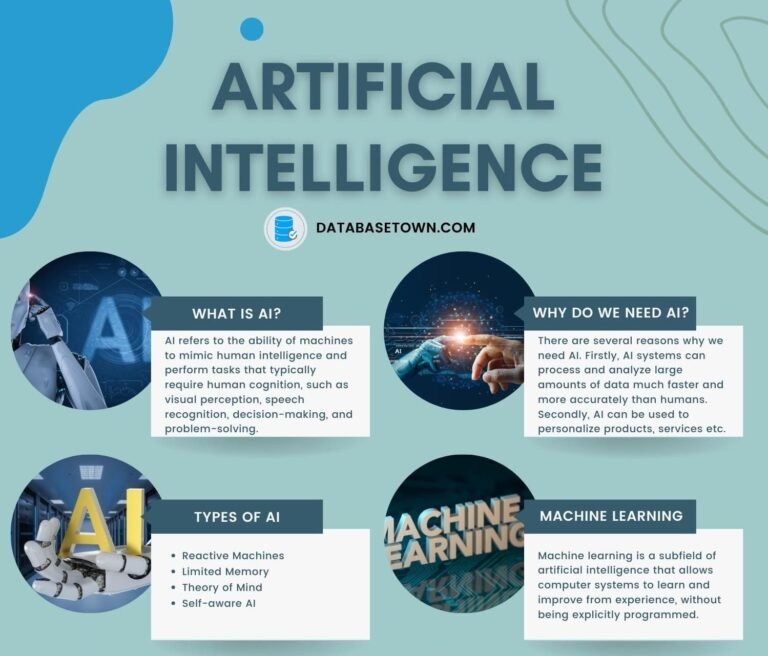The AI Hype And Reality

Have you ever wondered about the hype surrounding artificial intelligence (AI) and how it aligns with reality? The AI hype has reached unprecedented levels, promising to revolutionize various industries and transform the world as we know it. However, amidst all the excitement, it is crucial to separate fact from fiction and understand the true capabilities and limitations of AI. In this article, we will explore the fascinating world of AI, debunking myths and shedding light on the reality behind the AI revolution. Get ready to embark on a journey that will enlighten you about the possibilities and challenges of AI, and discover how it is shaping our present and future.

The AI Hype
Artificial Intelligence (AI) has become one of the most talked about topics in recent years. From Hollywood movies to news headlines, it seems like AI is everywhere. However, it’s important to separate the hype from the reality when it comes to AI.
Exaggerated Claims and Promises
One of the main reasons behind the AI hype is the exaggerated claims and promises made by companies and researchers. It is not uncommon to hear about AI systems that can outperform humans in almost any task. While AI has undoubtedly made significant advancements, it is crucial to understand that AI still has its limitations.
Media Coverage and Public Perception
The media plays a significant role in driving the AI hype. Sensational headlines create excitement and curiosity among the public. However, this often leads to unrealistic expectations about what AI can achieve. It is essential for the media to provide accurate and balanced coverage of AI, highlighting both its potential and limitations.
Market Speculation
The AI hype is further fueled by market speculation. Investors and entrepreneurs see AI as the next big thing, and this leads to a flurry of AI-related startup companies and investment opportunities. The market speculation often overlooks the practical challenges and limitations of AI, resulting in a bubble that could burst if expectations aren’t met.
Unrealistic Expectations
One of the main dangers of the AI hype is the creation of unrealistic expectations. People often envision AI as a magical solution to all problems, capable of instantly transforming industries and solving complex societal issues. While AI has great potential, it is essential to approach it with realistic expectations and understand that AI is not a panacea for all problems.
AI Technology
AI technology encompasses various subfields that contribute to the development and implementation of intelligent systems. Understanding the different areas of AI technology is crucial to comprehending its capabilities and limitations.
Machine Learning
Machine learning is at the heart of AI. It is a method that allows computer systems to learn and improve from experience without being explicitly programmed. Machine learning algorithms analyze data, identify patterns, and make predictions or decisions based on the analysis. It has been widely utilized in various applications, such as image recognition, natural language processing, and recommendation systems.
Deep Learning
Deep learning is a subset of machine learning that focuses on neural networks with multiple layers. These deep neural networks are designed to simulate the human brain’s structure and function, enabling them to learn and recognize complex patterns from large amounts of data. Deep learning has significantly advanced image and speech recognition and has led to breakthroughs in various fields, including healthcare and autonomous vehicles.
Natural Language Processing
Natural language processing (NLP) is the AI technology that enables computers to understand human language. NLP algorithms analyze and process textual data to extract meaning, sentiment, and intent. NLP has transformed the way we interact with technology, enabling virtual assistants like Siri and chatbots to understand and respond to human queries.
Computer Vision
Computer vision involves teaching computers to understand and interpret visual data. It enables machines to analyze images and videos, recognize objects, and extract valuable information. Computer vision has numerous applications, including facial recognition, object detection, and autonomous vehicles.
Robotic Process Automation
Robotic process automation (RPA) uses AI and automation technologies to automate mundane, repetitive tasks traditionally performed by humans. RPA systems mimic human actions and interactions with software systems, freeing up human workers to focus on more complex and creative tasks. RPA has been widely adopted in industries such as finance, manufacturing, and customer service.
AI Applications
AI is being applied across various industries, revolutionizing the way we work, live, and interact.
Healthcare
AI has the potential to transform the healthcare industry by improving diagnosis, treatment, and patient care. Machine learning algorithms can analyze medical data to identify patterns and make predictions, aiding in the early detection of diseases and personalized treatment plans. AI-powered robots can assist in surgery and provide care for the elderly or disabled.
Finance
In the financial industry, AI is being used for intelligent trading, risk assessment, fraud detection, and customer service. Machine learning algorithms can analyze vast amounts of financial data to make informed investment decisions and predict market trends. Chatbots and virtual assistants are being used to provide personalized financial advice and support.
Retail
AI is reshaping the retail industry by enhancing the customer experience and optimizing operations. Recommendation systems powered by AI analyze customer data to provide personalized product suggestions, increasing sales and customer engagement. AI-powered chatbots assist customers with inquiries and provide real-time support. Robots and automation systems streamline inventory management and fulfillment processes.
Manufacturing
AI has the potential to revolutionize the manufacturing industry by enabling predictive maintenance, optimizing production processes, and improving product quality. AI-powered robots and automation systems can perform complex and repetitive tasks with precision and efficiency. Machine learning algorithms can analyze sensor data to predict equipment failures and schedule maintenance proactively.
Customer Service
AI is transforming customer service by providing personalized and efficient support. Chatbots and virtual assistants can handle routine customer inquiries, reducing wait times and improving customer satisfaction. Natural language processing enables machines to understand and respond to customer requests accurately. AI-powered sentiment analysis can analyze customer feedback to identify areas for improvement.

Ethical Concerns
As AI continues to advance, it raises ethical concerns that need to be addressed to ensure its responsible and ethical development and deployment.
Job Displacement
One of the main concerns surrounding AI is the potential displacement of jobs. Automation powered by AI technology could replace certain tasks currently performed by humans, leading to job losses in various industries. However, it is important to note that AI also has the potential to create new job roles and opportunities.
Privacy and Security
AI systems often require access to vast amounts of data to learn and make informed decisions. This raises concerns about the privacy and security of personal information. It is essential to have robust data protection measures in place and ensure that AI systems are designed with privacy in mind.
Algorithmic Bias
AI systems learn from data, including historical data that may contain biases. This can result in algorithmic bias, where AI systems make discriminatory decisions or perpetuate existing social biases. It is crucial to address and mitigate algorithmic bias to ensure fair and equitable outcomes.
Autonomous Weapons
The development of autonomous weapons powered by AI raises ethical concerns about their potential misuse and lack of human control. The use of AI in warfare and autonomous decision-making systems poses significant risks and calls for careful regulation and oversight.
Real-world Limitations
While AI has made tremendous progress, it still faces several real-world limitations that need to be overcome for its widespread adoption.
Data Quality and Availability
AI systems heavily rely on high-quality and diverse datasets to learn and make accurate predictions. However, accessing and curating such datasets can be challenging, especially in domains with limited data availability. Ensuring data quality and addressing biases in training data is crucial for AI systems to provide reliable and unbiased outcomes.
Computational Power and Cost
AI algorithms, particularly deep learning models, require substantial computational power and resources to train and deploy. The cost and energy consumption associated with AI can be significant barriers to its adoption, especially for smaller organizations. Addressing these computational challenges and optimizing resource usage is essential to make AI more accessible and cost-effective.
Interpretability and Explainability
AI models often operate as black boxes, making it challenging to understand and interpret their decisions and predictions. This lack of interpretability and explainability raises concerns, especially in critical domains such as healthcare and finance. Developing transparent and explainable AI models is crucial for building trust and ensuring accountability.
Human-AI Collaboration
Effective collaboration between humans and AI systems is vital for leveraging their respective strengths and compensating for their limitations. Designing AI systems that seamlessly integrate with human workflows and decision-making processes is necessary to maximize their impact.
Successful AI Implementations
Despite the challenges and concerns, AI has already demonstrated its potential in several real-world applications.
Personal Assistants (e.g., Siri, Alexa)
Personal assistants like Siri and Alexa have become an integral part of daily life for many people. These AI-powered virtual assistants can perform a wide range of tasks, from answering questions and setting reminders to controlling smart home devices. They showcase the power of natural language processing and machine learning in enabling human-AI interaction.
Recommendation Systems (e.g., Netflix, Amazon)
Recommendation systems powered by AI play a significant role in modern e-commerce and entertainment platforms. These systems analyze user preferences and behaviors to provide personalized product and content suggestions. They have transformed the way we discover new movies, books, and products, enhancing the user experience and driving sales.
Autonomous Vehicles
Autonomous vehicles represent a major technological advancement enabled by AI. Self-driving cars are equipped with AI-powered sensors, navigation systems, and machine learning algorithms that allow them to perceive their surroundings, make decisions, and navigate safely. While there are still significant challenges to overcome, autonomous vehicles have the potential to revolutionize the transportation industry.
Chatbots and Virtual Assistants
Chatbots and virtual assistants are increasingly being used in customer service to provide quick and efficient support. These AI-powered conversational agents can handle routine customer inquiries, freeing up human agents to focus on more complex issues. They are available 24/7 and can provide personalized responses, improving customer satisfaction and reducing costs for businesses.
Image and Speech Recognition
AI has made significant advancements in image and speech recognition. Image recognition technology can accurately identify objects, faces, and scenes in images and videos, enabling applications such as facial recognition and object detection. Speech recognition technology has also improved, allowing machines to transcribe speech and understand spoken commands accurately.
AI and Job Market
AI technology has had a profound impact on the job market, causing both concerns and opportunities.
Automation of Routine Tasks
AI has the potential to automate routine and repetitive tasks, freeing up human workers to focus on more creative and complex tasks. This automation can improve productivity and efficiency in various industries, from manufacturing to customer service. However, it also raises concerns about job displacement, requiring a strategic approach to reskilling and retraining.
Augmentation of Human Capabilities
AI can augment human capabilities by providing tools and systems that enhance our decision-making and problem-solving abilities. AI-powered analytics and data-driven insights can enable professionals to make more informed and accurate decisions. The collaboration between humans and AI can lead to increased productivity and better outcomes.
Creation of New Job Roles
While automation may displace certain jobs, AI also has the potential to create new job roles and opportunities. The development and deployment of AI systems require skilled professionals in areas such as data science, machine learning, and AI ethics. Additionally, AI technologies can enable the emergence of new industries and business models.
Shift in Skill Requirements
As AI becomes more prevalent, there is a shift in the skill requirements in the job market. Proficiency in AI technologies, data analysis, and problem-solving will become increasingly important. It is crucial for individuals and organizations to adapt to these changing skill demands through continuous learning and upskilling efforts.
Future of AI
As AI continues to evolve, there are key areas that will shape its future development and impact.
Narrow vs. General AI
One of the fundamental debates in the AI community is the distinction between narrow AI and general AI. Narrow AI refers to systems that are designed for specific tasks and domains, while general AI aims to replicate human-level intelligence across a broad range of tasks. The development of general AI raises immense technical and ethical challenges and remains a topic of ongoing research and speculation.
Ethical and Regulatory Frameworks
The future of AI will require robust ethical and regulatory frameworks to ensure its responsible and ethical development and deployment. Addressing concerns such as algorithmic bias, privacy, and accountability will be crucial for building trust and public acceptance of AI technologies. Collaboration between governments, industry, and academia is essential to establish these frameworks.
Collaboration between AI and Humans
The future of AI lies in effective collaboration between AI systems and humans. Building systems that can understand and adapt to human preferences, values, and intentions is crucial for human-AI interaction. AI should be designed as a tool that complements human capabilities, rather than a replacement. Ensuring that AI systems consider human values and ethics is vital for their responsible integration into society.
Impact on Society and Economy
The widespread adoption of AI will have profound impacts on society and the economy. It is expected to drive economic growth, productivity, and innovation. However, it also raises concerns about income inequality, job displacement, and social inequalities. Balancing the benefits and risks of AI and ensuring equitable distribution of its benefits requires proactive policies and long-term planning.
Balance between Hype and Reality
To maintain a balanced and realistic view of AI, several factors need to be considered.
Educating the Public and Managing Expectations
Educating the public about the capabilities and limitations of AI is crucial to manage expectations and prevent the propagation of unrealistic claims. Media organizations, educational institutions, and AI researchers have a responsibility to provide accurate and balanced information about AI to the public.
Ethical Responsibility of AI Developers
AI developers have an ethical responsibility to ensure that their technologies are developed and deployed responsibly. This includes addressing biases, ensuring transparency, and fostering human-AI collaboration. AI should be designed to benefit society as a whole, while minimizing the potential risks and harmful impacts.
Transparency and Accountability
AI systems should be transparent and accountable to build trust among users and stakeholders. This includes providing explanations for decisions made by AI systems, ensuring the fairness and accuracy of outcomes, and allowing for human intervention when necessary. Transparency and accountability promote responsible use of AI and enable users to understand and challenge AI systems’ behavior.
Long-term Planning
To harness the full potential of AI and mitigate its risks, long-term planning is crucial. Governments, industry leaders, and academia need to collaborate and invest in research, education, and infrastructure to develop AI technologies responsibly. Long-term planning should include anticipating economic and societal impacts, considering ethical implications, and adapting regulatory frameworks accordingly.
Conclusion
The AI hype is driven by exaggerated claims, media coverage, and market speculation. While there are significant advancements in AI technology, it is essential to separate the hype from the reality. AI has the potential to transform various industries, improve efficiency, and enhance decision-making. However, it also raises ethical concerns, requires addressing limitations, and demands a prudent and responsible approach. By educating the public, fostering ethical responsibility, ensuring transparency, and planning for the future, we can strike a balance between the benefits and risks of AI and harness its potential responsibly.






